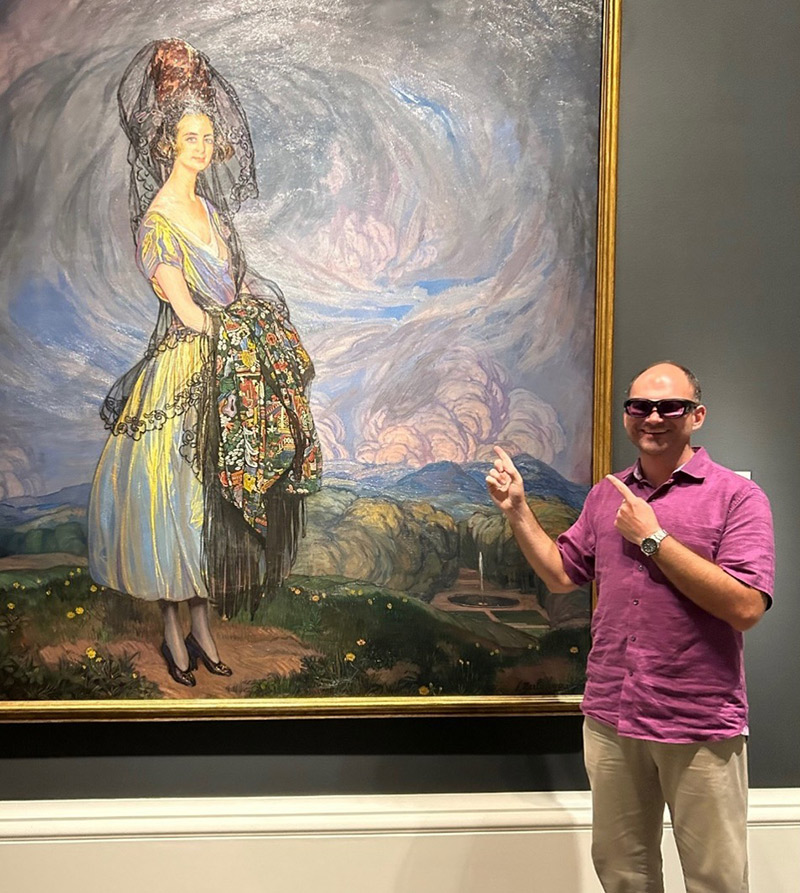By Preston Fassel

We live in a world of lush and vibrant colors, and most people enjoy that they can experience the full spectrum. For those of us who can’t, it’s not a prison sentence, but it can make things unpleasant or awkward, and even impede certain activities. I know this firsthand—having Deutan color-blindness, I’m one of the 8% of people who suffer some form of color blindness. In fact, because men only need the gene for color blindness to appear on one X chromosome for it to occur, the vast majority of those suffering from the condition are men. Since women need the gene on both chromosomes, 95% of those affected with color blindness are male.
In my case, Deutan color blindness is a form of red-green color vision deficiency that results in difficulty with hue differentiation. While I can tell very vibrant shades of colors apart easily, those close on the spectrum appear the same, meaning shades of red and orange, yellow and green, blue and purple, and even purple and gray are identical to me. At its most embarrassing, this meant my mom sending me back to change clothes in grade school after making what to me were very sensible choices, but which would’ve looked incredibly strange to teachers and classmates. At its most frustrating, it meant I never knew when the Optomap machine was ready to be switched off (the light went from green to yellow when the shutdown was complete—well, for everyone else. For me, it stayed green). I can still drive and live a “normal” life, but I know I’m missing out.
This was something that was thrown into stark contrast for me this summer when my wife and I visited SMU’s Meadows Museum here in Dallas. It houses one of the largest collections of Spanish art outside Spain, and as part of a special exhibition they were displaying major works of Spanish abstract art, including some paintings by Antonio Saura, brother of one of my favorite directors, Carlos Saura. To my surprise, upon checking into the museum, guests were offered a pair of Enchroma glasses. These are a type of glasses outfitted with lenses that, per company literature, “remove light where the problematic overlap of cones for color blindness occurs, allowing the brain to distinguish shades with more accuracy.” In other words, I could see the exhibition the same way my wife would - a first-time experience. I happily jumped at the opportunity.
Exploring the exhibit was a literally eye-opening experience. I spent just as much time admiring the art as I did popping the glasses on and off to see what it would normally look like to me versus what it “really” looks like. I quickly discovered that in addition to not being able to distinguish easily between different shades, there were some colors I wasn’t picking up on at all: entire shapes and swaths of color that would’ve normally been invisible to me were suddenly vibrant, present, and alive.
The afternoon got me thinking about the possibilities of being able to carry the experience out of Meadows Museum with me (the docent wisely took my driver’s license as collateral to make sure I didn’t walk off with those Enchromas). That in turn got me thinking about what ECPs can provide their patients: the same opportunity I had for just an hour to see the “real” world. Not only Enchroma but Vino, Pilestone, and many other manufacturers offer both sun lenses and fit-over glasses to allow color blind individuals a new perspective on the world. Many individuals would appreciate the opportunity to engage with the world as most people see it. Because such a small percentage of the population suffers from color blindness—and because men are less likely to acknowledge or ask for help for their medical problems—it’s an issue we probably don’t give much thought to. With so much technology available at our fingertips now, though, it’s perhaps time we make color blindness correction a regular consideration for our practices and incorporate color-correcting frames and lenses into our dispensaries. With such a brave new world of optics ahead of us, wouldn’t it be nice if we could all see it clearly?










